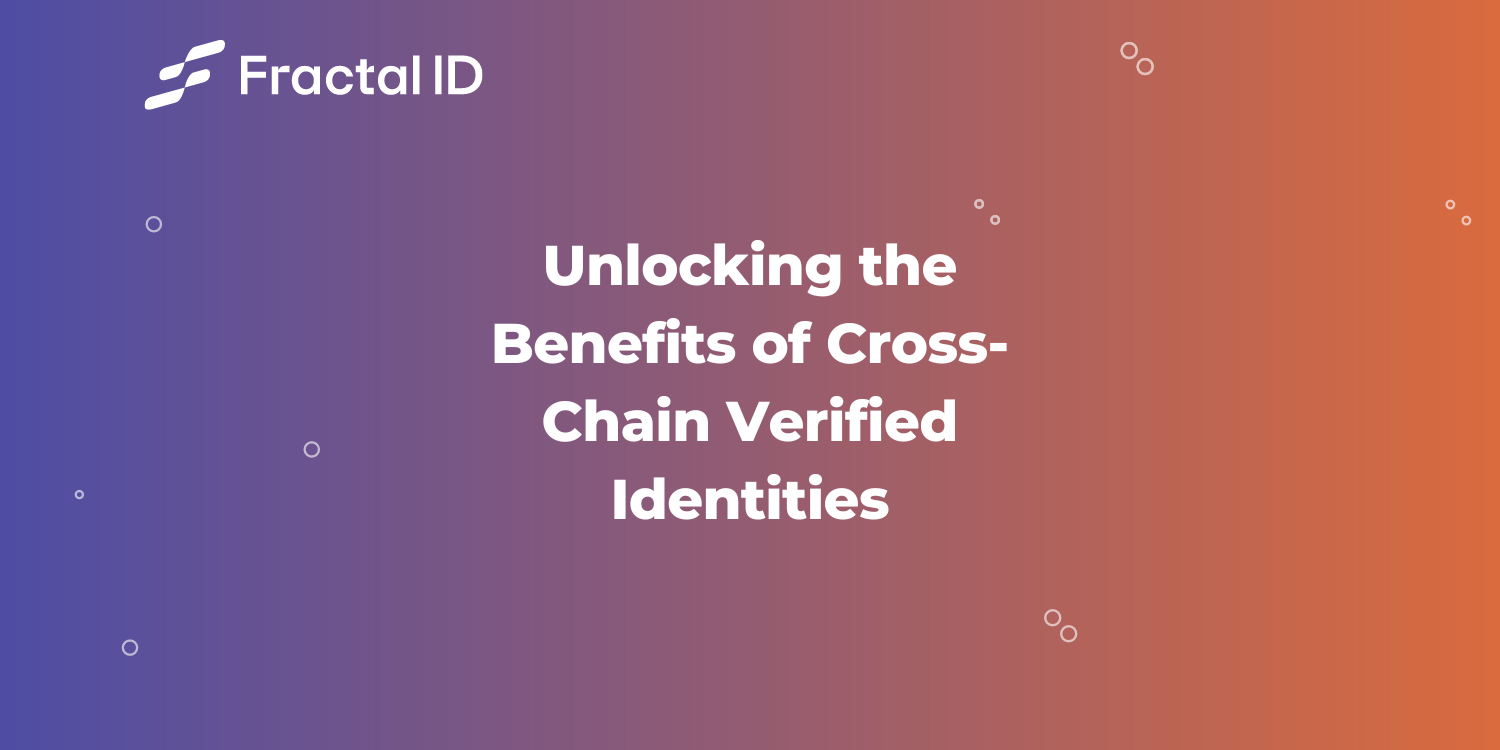1. The Challenge: Why cross-chain identity is crucial in web3
Decentralized applications (dApps) operate through various blockchain networks, or “chains,” which presents a challenge for users. When switching from one chain to another, users often have to verify their identity repeatedly. This process can be time-consuming, frustrating, and risky as it undermines the trust and security of decentralized applications.
This lack of a reliable cross-chain identity (CCI) solution creates a significant challenge for the development and adoption of dApps. Without such a provider, there is currently no easy way for users to maintain a verified identity across multiple chains.
Moreover, this repeated verification process can also undermine the trust and security of dApps. When users are forced to repeatedly verify their identities across multiple chains, it can create confusion and raise concerns about the authenticity and security of the dApps they are using.
2. Who benefits from Multi Chain Verified Identities in Web3?
The benefits of cross-chain identity synchronization are numerous.
2.1 Users
For users, cross-chain identity means a smoother and more seamless experience when using dApps. A user’s cross-chain identity can be used to sign a single message across multiple wallets and blockchains.
2.2 dApps
For dApps, it means increased user adoption and engagement, which translates to higher revenue potential.
2.3 Developers
For developers, web3 cross-chain identity means the ability to create truly decentralized applications that can be trusted by users, no matter which chain they are using.
Let’s dive deeper into the benefits for developers:
2.3.1 Interoperability
There are two aspects to consider under the context of interoperability. The first is interoperability for a single dApp across different chains. This means that the dApp can function seamlessly across multiple blockchains, allowing users to access and interact with the application regardless of the underlying chain they are using. The second is interoperability across different dApps. This means that different dApps can interact with each other even if they are built on different chains. This means that developers can build dApps that interact with multiple blockchain networks without having to worry about managing different identities for each chain.
2.3.3 Reduced complexity
CCI can reduce the complexity of managing identified users across different blockchain networks, which can make it easier for developers to build decentralized applications. By using CCI, developers can simplify the authentication process and focus on building the core functionality of their dApps.
2.3.4 Increased user privacy
CCI can also help improve user privacy by allowing users to control their identity information and share it only with the dApps they choose. This means that developers can build dApps that respect user privacy and provide them with more control over their data.
2.3.5 Access to new markets
CCI can enable developers to access new markets by allowing them to build dApps that can interact with multiple chains. This can help expand the reach of their applications and provide users with access to new services.
3. The Solution
So the questions are: How can users see their life simplified and have one single identity across multiple chains? How can developers create truly decentralized applications that can be trusted by users, no matter which chain they are using? And how can dApps increase user adoption?
And the response is simple. In order to solve some of the problems faced by dApps, users and developers there is a need for a cross-chain identity solution that can bring together verified identities from various dApps and ecosystems and establish a reliable synchronization mechanism across different chains.
With such an identity provider, users can have a verified identity that works across multiple chains, eliminating the need for repetitive identity verification on different platforms. This would enable developers to create truly decentralized applications that can be used by anyone, anywhere, regardless of the chain they are using, thereby increasing the reach and adoption of dApps.
3.1 How Fractal ID helps: one identity, multiple chains
With Fractal ID identity technology users have a verified identity that can be seamlessly used across multiple chains, eliminating the need for repetitive identity verification processes.
By doing so, Fractal ID is enhancing the user experience, increasing trust and security, and driving adoption and engagement for dApps. This not only saves time and effort for users, but also enhances the security and trust of web3 projects.
3.2 Chains where Fractal ID (multi-chain identity solution) can be leveraged so far
Users, developers and dApps can now take advantage of Fractal ID Decentralized Identity technology in the following chains: Polygon, BNB Chain, Avalanche, Gnosis, Aurora, Acala and more to come.

With a track record of trust from nearly 1 million users across 200+ projects, Fractal ID identity solutions are revolutionizing the way dApps approach privacy by creating hassle-free onboarding experiences, enabling users to reuse their Fractal IDs across chains seamlessly.
4. Conclusion
In conclusion, cross-chain identity is crucial in web3 as it enables users to maintain a verified identity across multiple blockchain networks, which improves interoperability, security, privacy, and reduces complexity.
For developers, cross-chain identity allows them to build dApps that can be trusted by users, and enables access to new markets. However, the lack of a reliable cross-chain identity solution presents a significant challenge to the development and adoption of dApps. Therefore, solutions like Fractal ID that provide a trustless cross-chain synchronization mechanism can enhance the user experience, save time, increase trust and security, and drive adoption and engagement for dApps.
